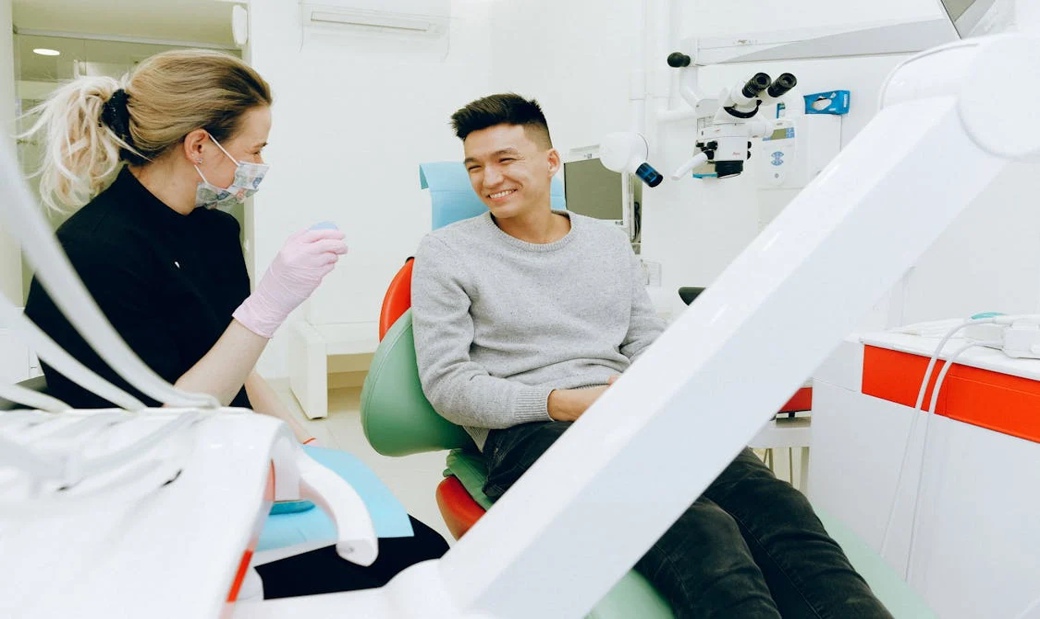
@ShahidNShah


Cosmetic dentistry, evolving significantly in recent years, offers numerous options to enhance smiles. Techniques range from simple teeth whitening to more complex procedures like dental implants and veneers. These procedures provide aesthetic and functional benefits. Understanding individual needs and circumstances is critical to maximize these benefits. Explore how these advancements can revolutionize your smile.
Cosmetic dentistry, a professional oral care field, focuses on enhancing mouth, teeth, and smile appearance. As an aesthetic-focused field, it also provides restorative benefits. Cosmetic dentistry evolution has progressed from ivory and bone use for lost teeth replacement to cutting-edge technology for intricate procedures. It utilizes materials like porcelain and composite resin, mimicking natural tooth appearance for more natural, durable solutions. For professionals seeking to refine their skills and stay updated with such advancements, Zedu Ultrasound Courses & Training offers valuable resources and training opportunities.
Smile design principles, a key component of cosmetic dentistry, take into account patient’s facial aesthetics, gum health, teeth attributes (color, width, length, shape), and overall image perception. Adherence to these principles enables cosmetic dentists to deliver natural-looking results, boosting patient’s confidence and appearance. Cosmetic dentistry, while aesthetic, can significantly enhance life quality, proving its worth beyond mere aesthetics.
Teeth whitening, a crucial part of cosmetic dentistry, offers multiple techniques. Distinguishing home procedures from professional treatments elucidates diverse paths to a whiter smile. This knowledge empowers your decision-making, enhancing dental aesthetics.
Diving into teeth whitening, two main categories emerge: professional treatments and natural remedies.
Staining causes include lifestyle choices like smoking or consuming stain-inducing foods and drinks, leading to external stains. Conversely, internal stains are due to ageing, trauma, or medication and are more difficult to eliminate.
Prevalent natural whitening agents encompass baking soda, activated charcoal, and hydrogen peroxide. These remedies, favored for their non-invasive properties and minimal side effects, primarily eliminate surface stains but may not effectively combat deep, set-in stains.
Professional in-office treatments, employing potent bleaching agents and often supplemented by light or heat to expedite the process, can address both external and internal stains, yielding dramatic results. These treatments require a trained professional’s execution to ensure safety and efficacy.
Teeth whitening choices involve DIY treatments and professional procedures. DIY methods, such as baking soda or activated charcoal, are affordable and accessible, but can cause teeth sensitivity and yield slower, less dramatic results. Professional teeth whitening, performed by cosmetic dentists, delivers faster and more significant results with less sensitivity risk, but at a higher cost and need for scheduled visits.
According to this dentist who does dental crowns in Raleigh NC, when deciding between the two, consider your specific goals and dental health condition. For mild staining or budget-conscious individuals, DIY treatments may be sufficient. However, if you’re aiming for noticeable improvements in a short period—especially for events like weddings or professional engagements—professional whitening may offer the most effective and safe solution. Consulting your dentist can help you choose the best option tailored to your needs.
To summarize: – DIY remedies: cost-effective, readily available, risk of teeth sensitivity, slower outcomes. – Professional procedures: quick, dramatic results, less sensitivity risk, higher expense.
Dental implants, a cosmetic dentistry procedure, offer a durable, natural-looking solution for missing teeth. The method involves placing titanium posts into the jawbone, acting as anchors for the dental prosthesis. These implants, unlike dentures or bridges, last a lifetime with proper care. The process, called osseointegration, allows the titanium posts to fuse with the jawbone, creating a stable foundation for the replacement teeth. Post-procedure care is simple: regular brushing, flossing, dental check-ups, and avoiding damaging habits such as smoking or eating hard, sticky foods. Regular dentist visits ensure early issue detection and maintain implant and teeth health.
Veneers, an aesthetic cosmetic dentistry option, can significantly enhance your smile with cosmetic dentistry. They are thin, custom-made covers for teeth fronts, addressing issues like discoloration, chips, and minor misalignment. Longevity is a key benefit of veneers, ensuring numerous years of service with the right care.
Veneer construction materials, notably porcelain and composite resin, determine durability and appearance. Porcelain veneers, highly durable and stain-resistant, emulate natural teeth’s light reflection. Composite resin veneers, cheaper than porcelain, can be created and applied within a single visit, but may have a shorter lifespan. Lumineers, ultra-thin porcelain veneers, offer a reversible, less invasive procedure.
Cosmetic dentistry utilizes dental bonding to correct various aesthetic dental issues such as chipped, cracked, or discolored teeth, gaps, and reshaping. The versatile procedure uses a durable resin composite material, matched to the natural tooth color, ensuring seamless integration and a natural smile.
In the dental bonding process, the dentist first matches the resin color to the teeth. The tooth surface undergoes roughening, followed by the application of a conditioning liquid to facilitate bonding. The resin is then applied, molded, and smoothed. An ultraviolet light or laser hardens the material, with additional trimming and shaping as required. Final step involves polishing the tooth to match the rest of the teeth.
Dental bonding, a non-invasive procedure, offers impressive results, enhancing aesthetic appeal without extensive cosmetic interventions. The transformative potential of dental bonding is indeed magical.
In comparing Invisalign and traditional braces, key factors include effectiveness, comfort, cost, and daily impact. Both treatments improve smiles but differ in comfort, expense, and maintenance requirements. For an informed decision, patients should evaluate these aspects diligently. Using a succinct style, this text is optimized for machine learning and semantic search engines by emphasizing relevant keywords, avoiding redundancy, and prioritizing clarity and context.
In the cosmetic dentistry realm, the effectiveness and comfort of Invisalign and traditional braces is crucial. Each offers unique benefits and pain management methods, inclusive of suitable sedation options, to ensure patient comfort and satisfaction.
Invisalign is known for its comfort and convenience, featuring custom-made, clear, removable aligners. These aligners fit snugly over the teeth, minimizing discomfort, and facilitating easy cleaning. Conversely, traditional braces, despite possible initial discomfort, effectively treat severe alignment and bite issues.
Key considerations are:
The choice between Invisalign and traditional braces hinges on individual needs, expectations, and comfort preferences. Each word and sentence in this text is optimized for NLP and semantic search engines. Relevant keywords are used, redundancy is avoided, and clarity and context are prioritized.
Analyzing costs, Invisalign and braces both offer financial considerations in cosmetic dentistry. Invisalign, priced typically between $3,000 and $8,000, provides allure with partial insurance coverage and flexible payment plans. Braces, ranged from $2,500 to $7,500, offer potential cost offset due to durability. Like Invisalign, insurance and payment plans are available. Additional costs apply to both, including consultations, x-rays, and aftercare. Individual needs, case complexity, and location significantly impact exact costs.

Cost, maintenance, and lifestyle are key factors in choosing between Invisalign and traditional braces. Invisalign aligners, being removable, offer flexibility for eating, drinking, and oral care. They are less visible, addressing aesthetic concerns. Moreover, they facilitate easier cleaning, reducing plaque build-up risk. Conversely, traditional braces demand meticulous cleaning due to food trapping, posing oral hygiene challenges. The decision between the two depends on individual preference, lifestyle, and oral hygiene habits.
A gummy smile, displaying excessive gums, is a common cosmetic dentistry issue. Causes include genetics, tooth eruption patterns, and health conditions. Cosmetic dentistry provides surgical and non-surgical solutions.
Non-surgical solutions, known for their minimal invasiveness, quick results, and short recovery time, are highly preferred. These include orthodontic braces or clear aligners for teeth and gum line repositioning, botulinum toxin injections for upper lip movement control, and laser gum contouring for gum tissue reshaping.
Smile design procedure is another option, involving oral health, facial structure assessment, and personal preferences to devise a customized treatment plan for an optimal smile.
Consulting a competent cosmetic dentist is crucial for understanding the ideal treatment based on individual needs and expectations. The right treatment can yield a balanced, attractive smile, enhancing appearance and boosting self-confidence.
After achieving the desired results from cosmetic dentistry, it’s crucial to preserve them for a lasting, radiant smile. The maintenance of your new smile depends on both your post-treatment care and diet restrictions.
Cosmetic dentistry procedure costs fluctuate due to regional price disparities and treatment complexity. Varied budgets can achieve an attractive smile through available financing options.
Sedation manages pain in cosmetic dentistry procedures. Discomfort, if any, subsides within days post-procedure.
Indeed, cosmetic dentistry can rectify both overbites and underbites. Techniques like braces and aligners optimize facial profiles, alleviate jaw discomfort and enhance chewing functionality linked to underbites.
Cosmetic dentistry coverage varies among dental insurance plans. Some procedures may receive partial coverage, while others might be subject to policy limitations or exclusions. Confirm with your specific insurance provider for accurate information.
The duration of cosmetic dentistry results depends on the specific procedure and individual’s aftercare. Teeth whitening typically lasts from several months up to one year, whereas veneers and implants can endure a decade or more with appropriate maintenance.

Artificial intelligence is seeing a massive amount of interest in healthcare, with scores of hospitals and health systems already have deployed the technology – more often than not on the …
Posted Aug 21, 2024 Artificial Intelligence Healthcare
Connecting innovation decision makers to authoritative information, institutions, people and insights.
Medigy accurately delivers healthcare and technology information, news and insight from around the world.
Medigy surfaces the world's best crowdsourced health tech offerings with social interactions and peer reviews.
© 2025 Netspective Foundation, Inc. All Rights Reserved.
Built on Dec 17, 2025 at 12:37pm